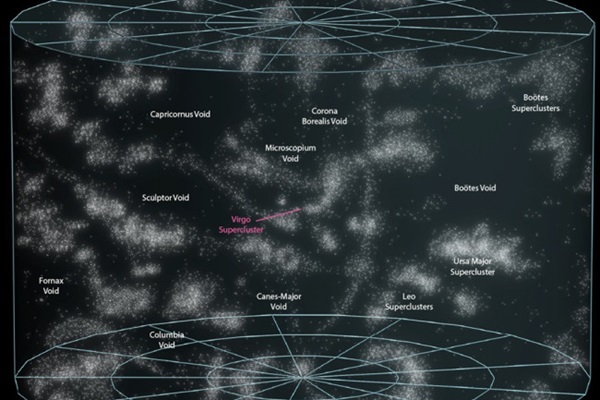What’s the difference between dark matter and dark energy? – Astronomy Magazine
A wide view of the local universe, spanning hundreds of millions of light-years, reveals the clumped and weblike structure of the cosmos, with strands of galaxies and immense voids. The Milky Way is just one of many points that make up the Virgo Supercluster. Rather than just empty, passive spaces, voids may hold clues to understanding dark matter, dark energy and galactic evolution.
Andrew Z. Colvin
Dark Energy
Astronomers have known that our universe is expanding for about a century now. Telescopic observations have shown that most galaxies are moving away from each other, which implies the galaxies were closer together in the distant past. As a result, the evidence piled up for the Big Bang. However, astronomers assumed that the combined gravitational pull of all the cosmos’ stars and galaxies should be slowing down the universe’s expansion. Perhaps it would even someday collapse back in on itself in a Big Crunch.
That notion was thrown out in the late 1990s, however, when two teams of astronomers spotted something that didn’t make any sense. Researchers studying supernovas in the the most distant galaxies discovered that distant galaxies were moving away from us faster than nearby galaxies. The universe wasn’t just expanding — the expansion was speeding up.
“My own reaction is somewhere between amazement and horror,“ astronomer Brian Schmidt, who led one of the two teams, told The New York Times in 1998. “Amazement, because I just did not expect this result, and horror in knowing that it will likely be disbelieved by a majority of astronomers — who, like myself, are extremely skeptical of the unexpected.“







